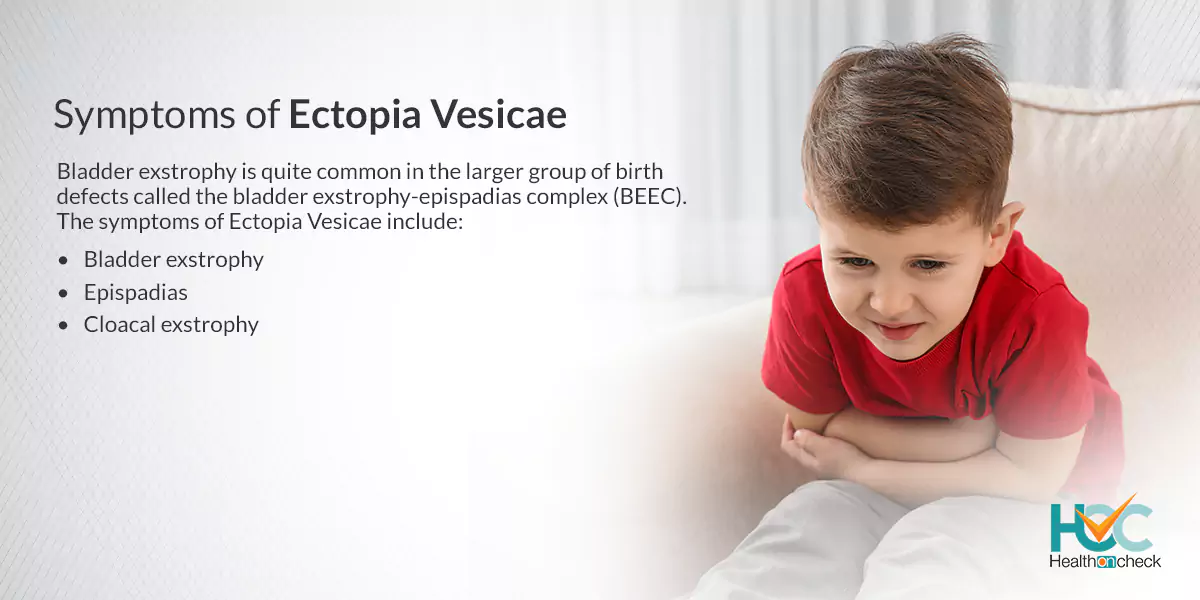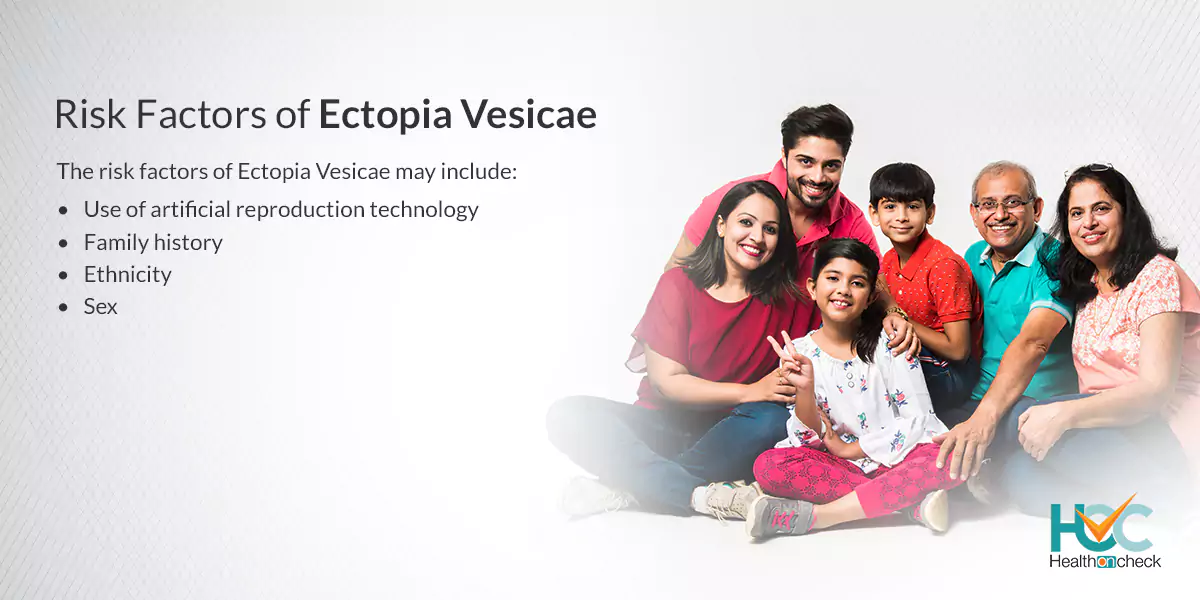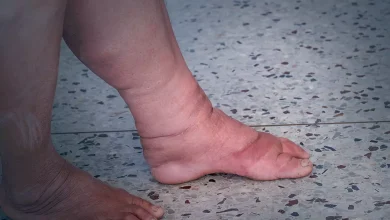All about Ectopia Vesicae

What is Ectopia Vesicae?
Ectopia vesicae also known as bladder exstrophy is a rare birth-related disorder where the bladder develops outside the bladder because of which the exposed bladder cannot store urine or function properly leading to urine leakage (incontinence). The presentation of ectopia vesicae is variable, and often includes abnormalities of the bony pelvis, pelvic floor, and genitalia. This disorder is very rare and is found more in males as compared to females. Ectopia vesicae is a very rare disease and is found in one of 10,000 to 50,000 live births. If one of the parents has this disorder then the chance of having a child with exstrophy is one in 70.
What are the Types of Ectopia Vesicae?
There are three types of Ectopia vesicae that include:
-Epispadias: In this type of Ectopia vesicae, the urethra opens in the upper aspect of the penis instead of the tip. It is mild compared to the other two types of Ectopia vesicae.
-Classic bladder exstrophy: Classic bladder exstrophy is an embryologic malformation that results in complex deficiency of the anterior midline, with urogenital and skeletal manifestations.
-Cloacal exstrophy: It is the most severe among the three types of Ectopia Vesicae where the bladder along with the intestines are exposed externally, with other malformations.

What are the Symptoms of Ectopia Vesicae?
Bladder exstrophy is quite common in the larger group of birth defects called the bladder exstrophy-epispadias complex (BEEC). The symptoms of Ectopia Vesicae include:
– Epispadias: It is a symptom where the tube to expel urine (urethra) is not develop totally.
– Bladder exstrophy: Ectopia Vesicae makes the bladder develop on the outside of the body. The bladder is also turned inside and out. Generally, bladder exstrophy will include organs of the urinary tract, along with the digestive and reproductive systems. This disorder causes defects in the abdominal wall, bladder, genitals, pelvic bones, the final section of the large intestine (rectum), and the opening at the end of the rectum (anus).
Vesicoureteral reflux occurs among children with Ectopia vesicae and causes urine to flow the wrong way — from the bladder back up into the tubes that are linked to the kidneys (ureters). Epispadias is also common among children with this rare birth defect.
– Cloacal exstrophy: Here the rectum, bladder, and genitals don’t totally separate as the fetus develops. These organs are not developed correctly, and the pelvic bones are also affected.
The kidneys, backbone, and spinal cord can also be affected. Most children with cloacal exstrophy have issues such as spinal abnormalities, that include spina bifida. Children born with protruding abdominal organs probably also have cloacal exstrophy or bladder exstrophy.
What are the Causes of Ectopia vesicae?
The underlying causes leading to bladder exstrophy are unknown, though researchers believe it partly occurs because of failed reinforcement of the cloacal membrane by the underlying mesoderm. Also, an amalgamation of genetic and environmental factors may play a role in the development of this disorder.
After birth when the fetus grows, a structure known as the cloaca where reproductive, urinary, and digestive openings all merges together — doesn’t grow fully in infants who develop Ectopia Vesicae. Defects in the cloaca can differ a lot based on the age of the fetus when developmental problems arise.

What are the Risk Factors of Ectopia Vesicae?
The risk factors of Ectopia Vesicae may include:
-Family history: If a baby’s elder sibling or a parent has bladder exstrophy then the baby has an increased chance of developing this condition.
-Ethnicity: Bladder exstrophy is more common in whites than in other ethnic groups.
-Sex: Male babies have more chances of being born with this disorder than female babies.
-Use of artificial reproduction technology: Children born through assisted reproductive technology, like IVF, have a higher risk of bladder exstrophy.
What are the Complications of Ectopia vesicae?
The complications of Ectopia vesicae may include:
– If no proper treatment is taken then children with bladder exstrophy will not be capable of holding urine (urinary incontinence) and when grown up they have the risk of developing sexual dysfunction and also have chances of getting bladder cancer.
– Surgery is usually done to cure this problem but it may also create complications where the children may walk with their legs turned slightly outward because of the separation of their pelvic bones.
– Long-term complications of this disorder include problems in pregnancy where both mother and baby are at high risk, and a planned caesarean birth may be required.
How Ectopia vesicae is Diagnosed?
Ectopia vesicae is usually detected through ultrasound or MRI during routine pregnancy tests before birth. The signs and symptoms to diagnose Ectopia vesicae during imaging tests include:
– Bladder that doesn’t pervade or empty accurately
– Umbilical cord that is located on the lower part of the abdomen
– Pubic bones part of the hipbones that form the pelvis — that is divided
– The size of genitals is smaller than normal genitals
In some cases, the condition can’t be diagnosed until after the baby is born. In such cases the doctors examine the:
– The doctor checks the size of the part of the bladder that is open and disclosed to air
– Location of the testicles
– Intestine bloating through the inguinal hernia (abdominal wall)
– Analysing of the region around the navel
– Location of opening at the end of the anus
– Size of pubic bones that are separated, and how swiftly the pelvis stirs
What are the Treatment Options Available for Ectopia vesicae?
Reconstructive surgery after birth is the main option to treat Ectopia vesicae. The objectives of this surgery include:
– Providing large space to store urine
– Helps in creating external genitalia (outer sex organs) that functions normally
– Managing bladder control
– Make kidney function properly
The two types of surgical repair to treat this condition such as:
-Complete repair: This process is known as complete primary repair of bladder exstrophy and it’s performed in a single surgical procedure and it helps to close the bladder and the abdomen along with repairing the urethra and outer sex organs. This surgery is usually carried out soon after birth, or when the baby is about two to three months old and it helps to repair the pelvic bones. Though, doctors don’t prefer to do this repair procedure if the baby is not more than 72 hours old because the pelvic separation being small to operate.
– Staged repair: Known as modern staged repair of bladder exstrophy it includes three operations. One is done within 72 hours after birth, another when the baby is 6 to 12 months, and the last one when the child is grown up to 4 to 5 years.
The first operation closes the bladder and the abdomen, and the second one repairs the urethra and sex organs. At last, when the child is old enough to be able to go toilet training, bladder neck reconstruction is carried out.
After the surgery, children are required to stay in traction during the healing process. The period of time a child requires to be immobilized differs, but usually, it takes around 5 to 6 weeks. At times, doctors place a thin tube into the spinal canal during surgery to provide pain medications straight to the area it’s required. This lets more consistent pain control and decreases the use of opioid medications.
Living with Ectopia vesicae
Ectopia vesicae is a birth-related condition that means children are born with it and it may cause problems when the children are grown up if the condition is not treated when they were infants. Children with this disorder and their family members may need continuous and highly competent treatment, counseling, and education by a skilled team of professionals. After treatment, children with this condition can lead a good life, but sometimes they may have to face a few health related challenges. Also, they can achieve continence and live a normal married life but sometimes women may face problems during pregnancy.
Whom to Consult?
If Ectopia vesicae is diagnosed when your child is born, immediately talk to a doctor and discuss what further steps are required. After doing some tests and examining your child, the doctor will take the required treatment options. Surgery is mostly done to treat this condition. After surgery, most children will be able to have a normal family life after growing up. A tube is inserted in the bladders of children to drain urine (catheterization). Additional surgeries may be needed as your child grow if some symptoms arise.
viva99 viva99 viva99 viva99 viva99 viva99 viva99 viva99 viva99 viva99




